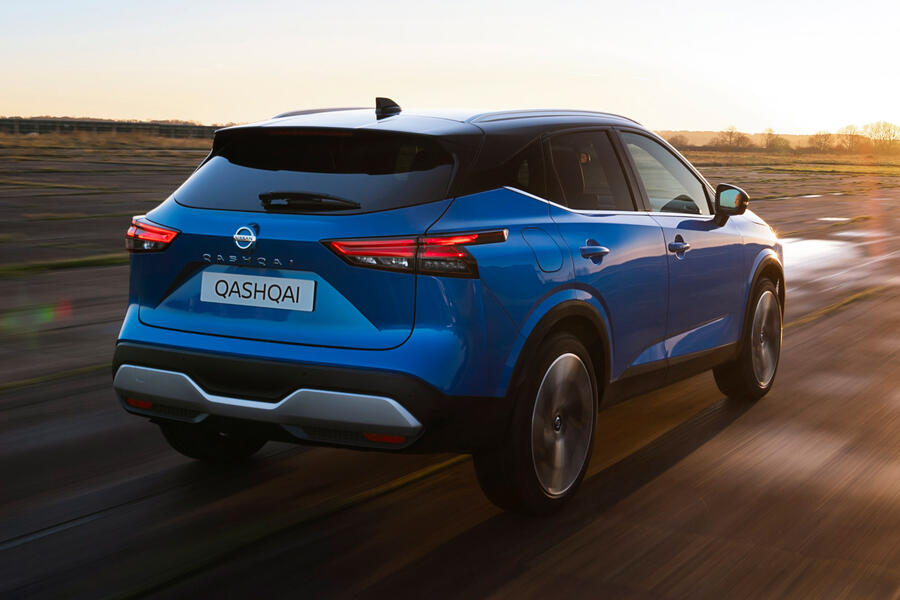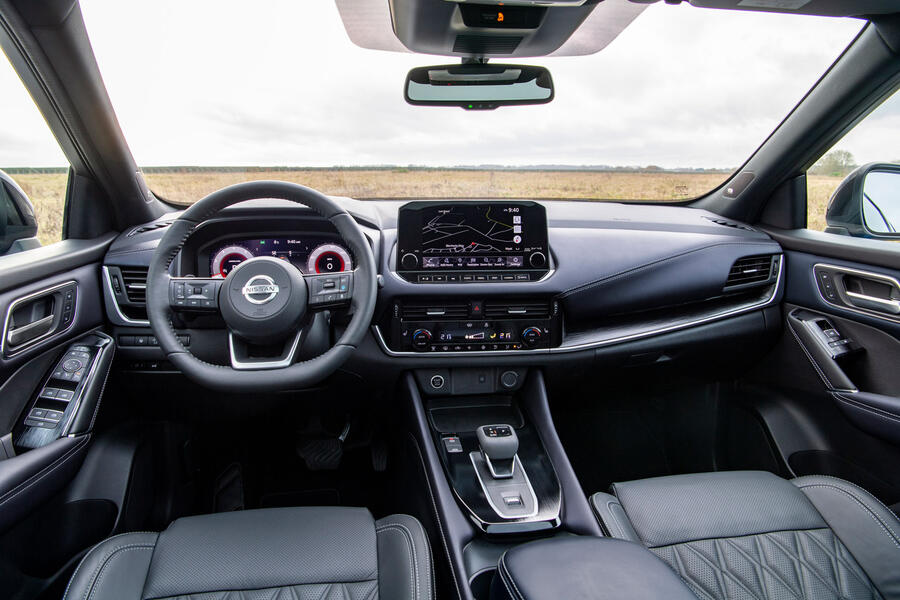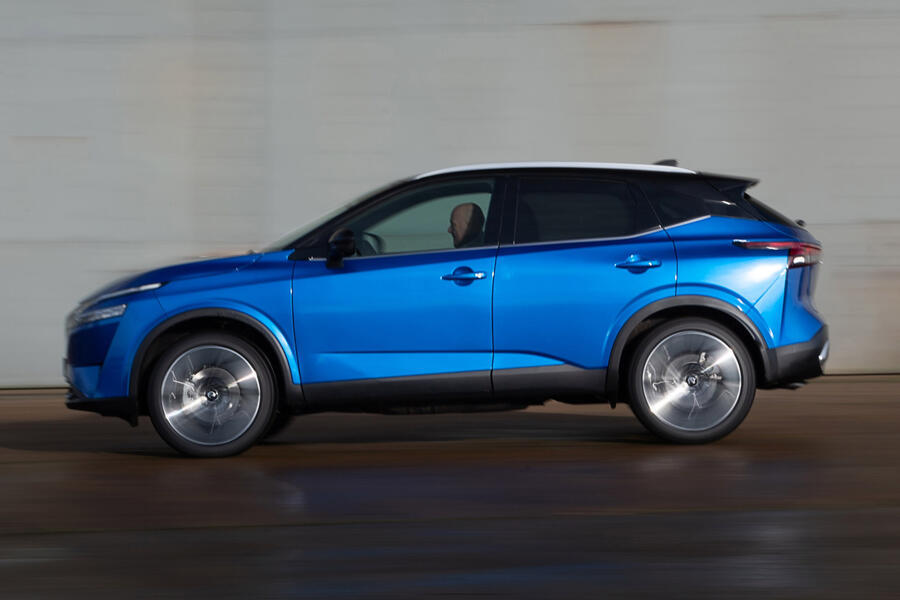The third-generation Nissan Qashqai marks a radical departure in all measures from its strong-selling predecessors, ushering in a new platform, a bold new look and hybrid-only powertrains.
Designed, engineered and produced in the UK, the new Qashqai sits atop an updated version of the Renault-Nissan-Mitsubishi Alliance’s CMF-C platform and has been completely redesigned with a “more purposeful” stance and “athletic and dynamic” styling cues. The front end is dominated by Nissan’s new V-Motion chrome grille surround, while the headlights – now LED matrix items – have been slimmed down and given a new ‘boomerang’ shape.
Increases in length and width of 35mm and 32mm respectively help the new Qashqai to appear longer and lower than its predecessor, while new optional 20in alloy wheels mark a push upmarket for higher-spec variants.
Designer Matt Weaver said the shift to electrified-only powertrains influenced the new Qashqai’s styling because it necessitated a heightened focus on aerodynamics, highlighting the front-end’s vertical air channels and the car's slightly tapered shape as a key differentiator over the previous, non-electrified car. The body shell is lighter, too, with new composite and aluminium panels contributing to an overall 60kg body-in-white weight loss. New welding and stamping techniques have improved overall stiffness by 41%, improving refinement, safety and responsiveness.

The revised CMF-C platform incorporates a new Macpherson strut suspension set-up at both ends. The two-wheel-drive car is equipped with a beam axle at the rear, while the four-wheel-drive variant adopts a more advanced multi-link set-up. The Qashqai also receives a more responsive power steering set-up, which, Nissan says, will “continue to offer a rewarding driving experience”, and also “be enjoyable when the road turns twisty”.
The interior has been subject to equally substantial revisions in line with Nissan’s aim to set “a new segment standard for premium feel, distinctive design and enhanced usability”, with an emphasis on advanced infotainment and safety technology. A new 9.0in high-definition multimedia touchscreen replaces the outgoing car’s 7.0in unit, while a 10.8in head-up display is said to be the largest in its segment. Google Assistant and Amazon Alexa bring voice control functionality, and the NissanConnect smartphone app allows remote control of certain functions including the horn, lights and central locking.
Forward visibility has been improved with repositioned door mirrors, thinner A-pillars and a wider windscreen opening angle. In the rear there’s an additional 28mm of knee room for passengers, thanks largely in part to an increase in wheelbase. The rear doors now open to 85deg for easier ingress and egress and improved access to children in the back seats. Boot capacity is also up, by 50 litres over that of the current model, courtesy of a revised rear suspension layout which allows for a lower cargo floor.
The Qashqai will be available with a choice of two electrified petrol powertrains, the more conventional of which pairs a 1.3-litre turbocharged petrol engine with a 12V mild hybrid system for boosts to performance and efficiency. Chosen to offer greater affordability over a 48V system, the 12V set-up recovers energy under deceleration to power on-board systems when the engine is stopped and provide a small torque boost when accelerating.


Join the debate
Add your comment